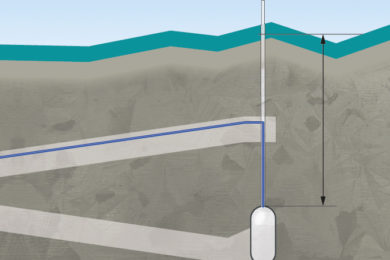SSAB, LKAB and Vattenfall have commenced building a rock cavern storage facility for fossil-free hydrogen gas on a pilot scale next to the HYBRIT pilot facility for direct reduced iron in Luleå, northern Sweden.
This is an important step in the development of a fossil-free value chain for fossil-free steel, the companies said, with the investment of just over SEK250 million ($29 million) divided equally across the holding companies and the Swedish Energy Agency, which provides support via Industriklivet.
As part of the SSAB, LKAB and Vattenfall joint HYBRIT initiative, Hybrit Development AB is starting the construction of a hydrogen storage facility in Svartöberget to develop the technology for storage.
Fossil-free hydrogen, which will replace coal and coke, is a crucial part of the production technique for fossil-free iron and steel production, where emissions of carbon dioxide will be virtually eliminated, the companies said. Hydrogen can be produced cost effectively through the electrolysis of water using fossil-free electricity. The hydrogen produced by the electrolysers can be used immediately or stored for later use.
Hydrogen storage is predicted to play a very important role in future power and energy balancing, and in large-scale hydrogen production, according to the companies. The storage facility is expected to be operational from 2022-2024.
Andreas Regnell, Head of Strategy at Vattenfall and Chairman of the Board at HYBRIT, said: “We’re really pleased that HYBRIT is continuing to lead the development of efficient production for fossil-free steel, as we’re now also building a pilot storage facility for large-scale fossil-free hydrogen in Luleå.
“Storage provides the opportunity to vary demand for electricity and stabilise the energy system by producing hydrogen when there’s a lot of electricity, for example in windy conditions, and to use stored hydrogen when the electricity system is under strain.”
Martin Pei, Technical Director of SSAB and Board member of HYBRIT, said: “By developing a method for hydrogen storage and securing access to fossil-free electricity, we’re creating a value chain all the way out to customers where everything is fossil-free – from the mine to the electricity and to the finished steel. This is unique.”
The 100 cu.m hydrogen storage is being built in an enclosed rock cavern around 30 m below ground. Building the storage facility underground provides opportunities to ensure the pressure required to store large amounts of energy in the form of hydrogen in a cost-effective way, the companies said.
The technology used is adapted to Scandinavian bedrock conditions and will be further developed to handle the storage of hydrogen.
The storage facility is based on proven technology and the hydrogen is used in the plant’s direct reduction reactor to remove oxygen from iron ore pellets, the companies said. The fossil-free sponge iron resulting from the process is then used as a raw material in the manufacture of fossil-free steel.
Industrialisation of fossil-free steel under the HYBRIT initiative is intended to start with the first demonstration plant, which will be ready in 2026, for the production of 1.3 Mt of fossil-free sponge iron in Gällivare, Sweden. The goal is to expand sponge iron production to a full industrial scale of 2.7 Mt/y by 2030 to be able to supply SSAB, among others, with feedstock for fossil-free steel.










